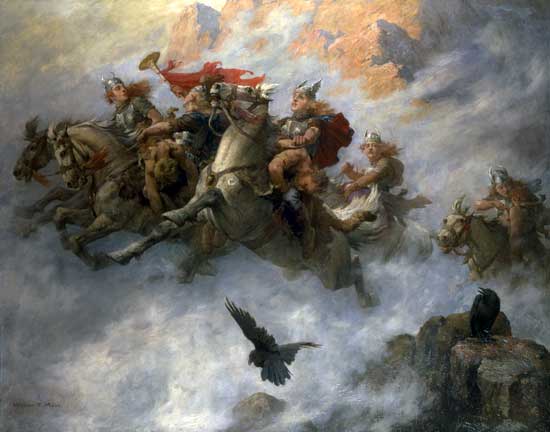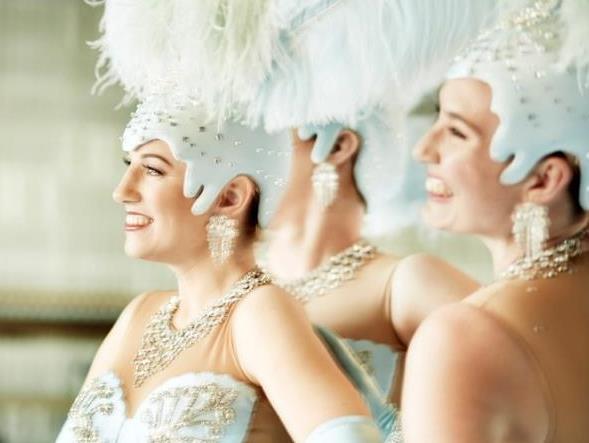Rhinemaidens from the Melbourne Ring Cycle Photo: Opera Australia, Keith Saunders
The cultural dollar is tight. Why spend taxpayers’ money on mounting Wagner operas rather than – say – erecting a mile-high statue of Kyle Sandilands on the moon warning alien civilisations what to expect should they approach further?
The list of things considered culture is endless. Once dance, drama, ballet and opera ruled the performing arts roost. But now, in an age of user-generated content and zombie walks, it’s hard to defend opera’s pre-eminence. Should we even try?
Isn’t everyone’s taste equally valid? You like Berlioz; I prefer boot-scooting. Why should one be thought better than the other, or attract public support to perpetuate its privileged status?
Wagner is expensive even by opera’s standards, and the Ring Cycle, is expensive even by Wagnerian ones.
The production reportedly cost Opera Australia A$20 million to stage.
It’s pricey for audiences too – it costs A$1000-2000 to attend four consecutive nights of The Ring Cycle). It’s the sort of signature event that has opera buffs audibly panting and others muttering about the cost of it all.
To spend or not to spend?
The free market works, at least in theory, by striking a balance between the supply of something (s) and its demand (d). A good (x) is provided to consumers by producers, who vary in number depending on the level of profit that can be made.
Fixing the relationship between (s) and (d) is the index finger of Scottish philosopher Adam Smith’s ‘invisible hand’, the price mechanism (p).
Here is the source of all political objections to supply-side subsidy, be it for the car industry or for installation art: it queers (p), throwing out the delicate calibration between those who can provide a good and those willing to pay for it.
If people want to watch Wagner they should stump up for a ticket without relying on government help, and thereby distorting a self-regulating means of exchange. The real-life problems with this idealised model give experts in the dismal science much to ponder. Two are especially relevant for culture.
Public and private benefits
The first is the extent to which art generates public as well as private benefits. If watching Wagner operas can be shown to produce more creative citizens, increase national cohesion or improve public morals, there might be a case for more generally supporting it.
A considerable amount of research has been done in this area, as the 2004 Rand report, Gifts of the Muse details. Attending the Ring Cycle may supress thoughts about Kyle Sandilands, for example – a public benefit many Australians would acknowledge.
Perfect knowledge
A second problem with the model is its assumption of ‘perfect knowledge’. Consumers are supposed to acquire – it’s never clear how or from where – an in-depth understanding not only of their own needs but the complex strategic goals of different producers.
Competition only works where there is the possibility of “substitution” – that is, of replacing one good with another of similar benefit in order to maximise personal satisfaction.
Obviously this is much easier with goods that are homogenous and divisible (bread, bricks, toilet paper etc). The more singular (x) is, the more it resists substitution or – another way of saying the same thing – the more knowledge you need to substitute something for it.
In the real world people’s preferences as revealed by the price mechanism are not a guarantee of good market outcomes because people:
a) often don’t know what they want
b) haven’t the wherewithal to find alternatives
c) can’t tell when they’re being sold a crock
Such “market failure” is the reason usually advanced for arts subsidy and unlike the private/public benefit argument it touches on culture’s intrinsic qualities as a “merit good”.
Societies need to educate their citizens to make informed cultural choices and provide cultural services which ensure the ongoing development of desirable norms and values.
Does ‘one-off’ art trump market failure?
Enter Wagner like a rampaging Valkyrie. At a certain point a ground needs to be established for people to define themselves as choice-making beings, a pre-economic level of experience to assist cultural tastes to come into existence in the first place.

William T Maud, The Ride of the Valkyries
Economists recognise “existence value”, the price consumers will pay to ensure (x) continues to exist regardless of whether they use it or not; “option value”, what they will pay to ensure they can use it; and “bequest value”, the price they will pay so their children and children’s children can use it.
The cultural experiences that shape us most deeply are the resolutely singular ones. You can quantify their benefits but not their value.
That doesn’t mean they don’t have one, only that it does not lend itself to aggregate numerical assessment.
The Ring Cycle is an example of “one-off” art. It does not supply an ongoing market need for long, gloomy operas about Norse heroes. It provides an experience that helps define us as human beings so we can make meaningful choices thereafter (including a few economic ones).
Get to know Wagner first
Every once in a while you have to take a chance with art if you want a life fully lived. It’s expensive, yes, and there are no guarantees. You can certainly object to subsidising a particular staging of the Ring Cycle.
But you have to know a bit about Wagner first – his operas are potentially a transformative encounter.
The silent shadow of the price mechanism is opportunity cost – what we stand to lose if we do not buy (x). Many Opera Australia patrons this month will be seeing the Ring Cycle for the first time and for some it may indeed be a “life-changing experience”.
In terms of supporting the production with public money, under what circumstances can we afford not to?
Performances of the sold-out Melbourne Ring Cycle are on until December 13, 2013.
This article was first published on The Conversation.





